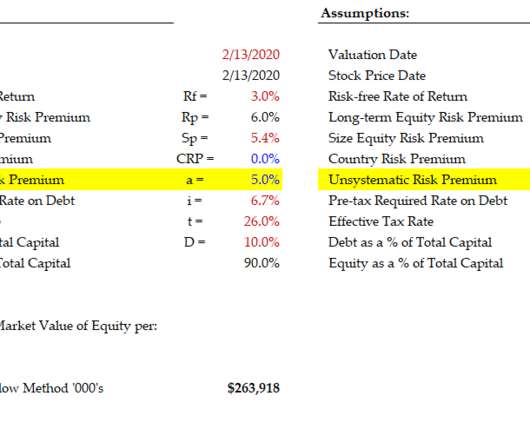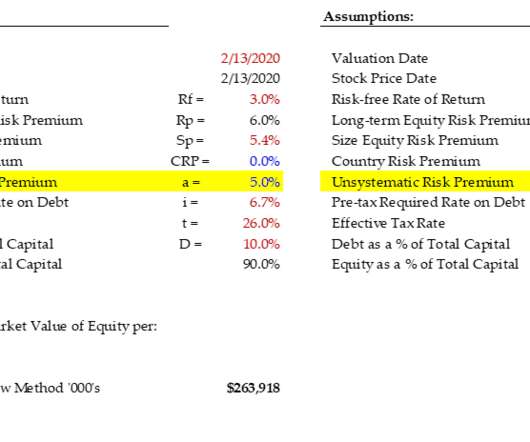ESG Valuation Considerations – Top Down or Bottom Up?
Value Scope
JULY 21, 2020
How do you justify making substantial investments and fundamental changes to corporate structures and culture without empirical evidence that it will make a direct impact on shareholder value, total shareholder return, net present value, and individual rates of return? Do ESG programs impact firm value?











Let's personalize your content